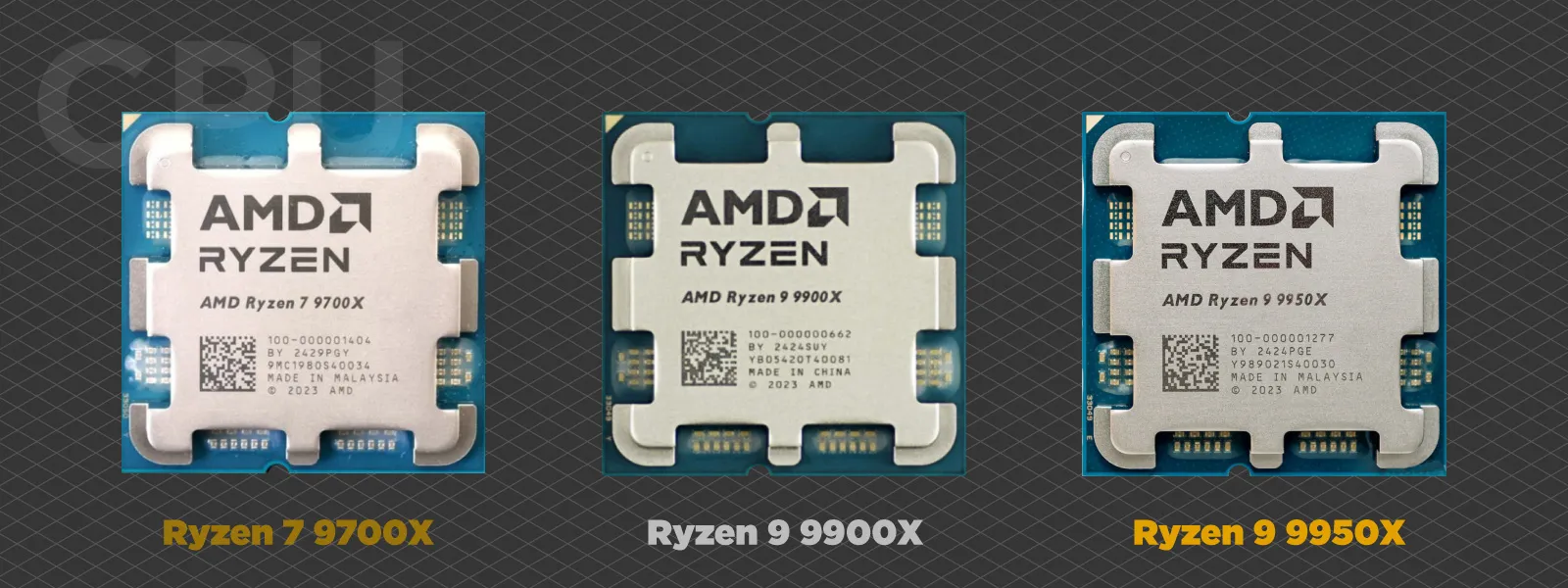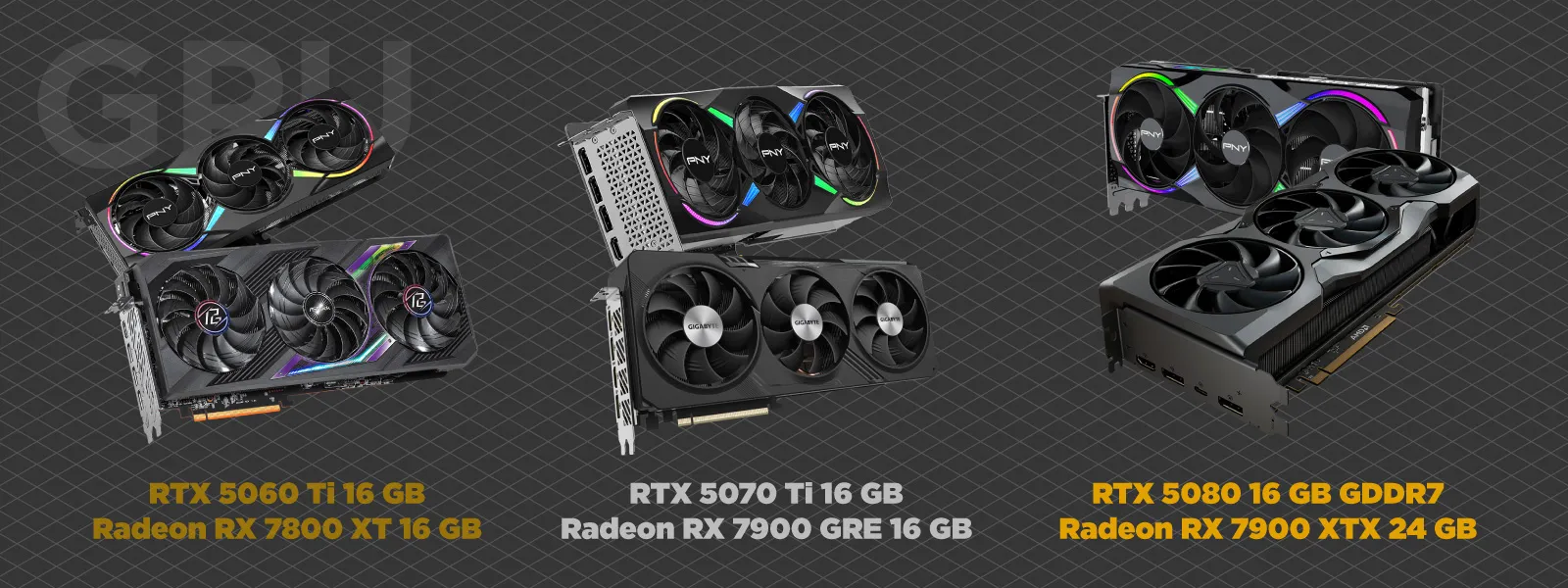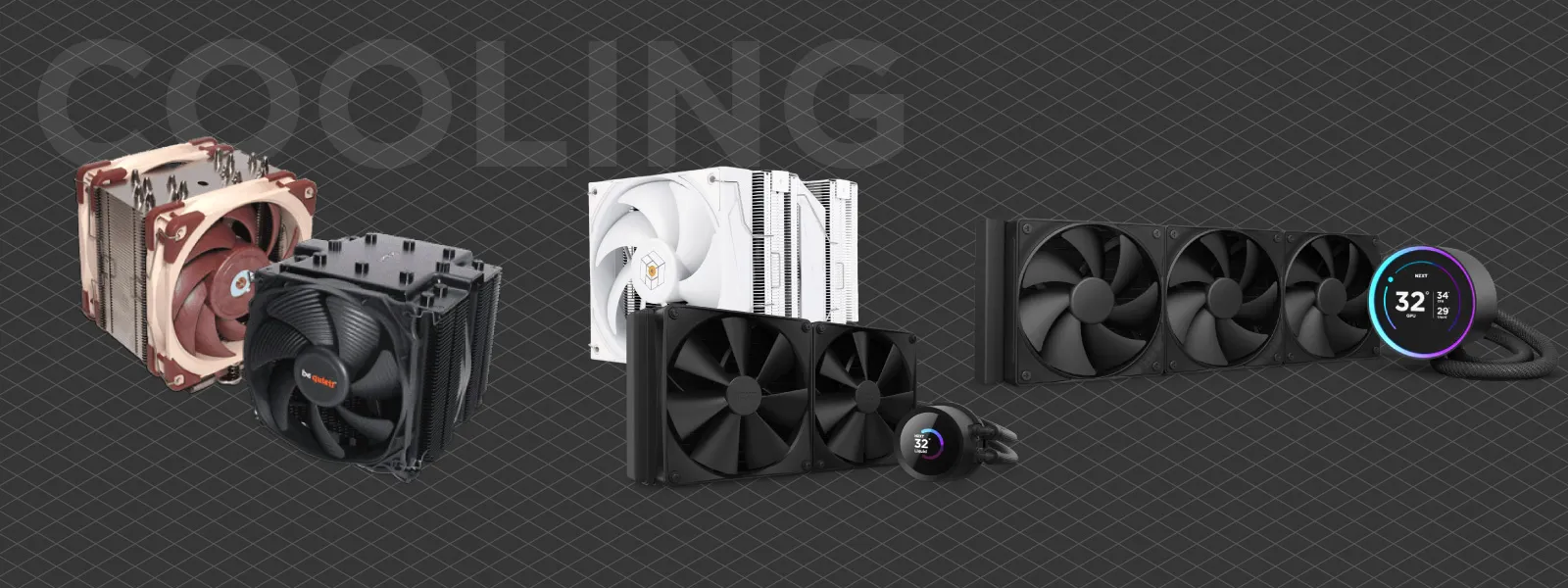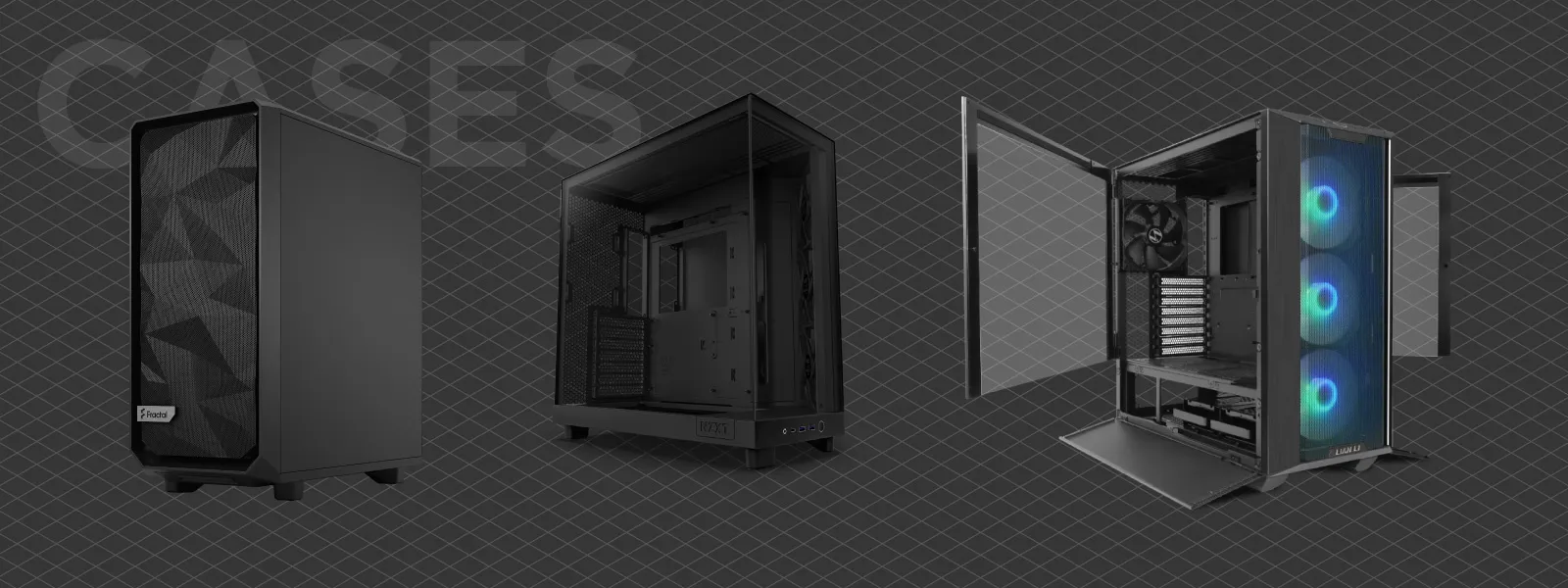Workstation PC 2025 – PC Build Hardware Advice
 Lukas
Zmejevskis
Lukas
Zmejevskis
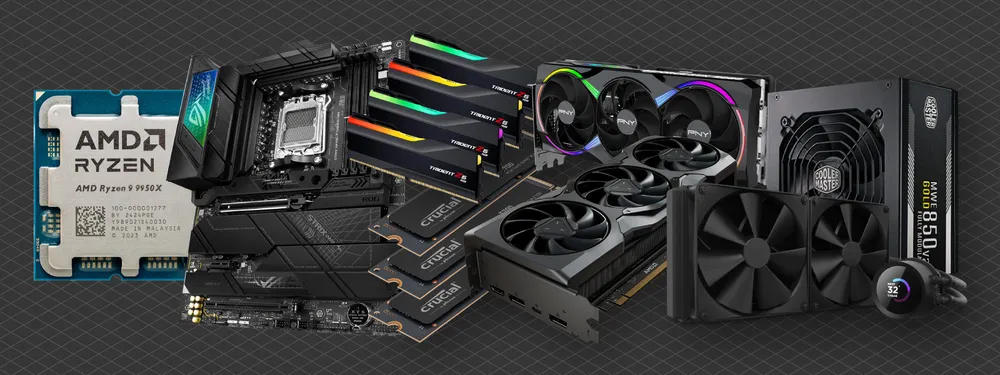
It is time to look at the workstation PC market and see what has changed since last year. The PC hardware world has not had a single, game-changing leap. Still, several essential updates are worth knowing about if you are building or upgrading in 2025. As with last year, this is not a step-by-step assembly guide. Instead, I will break down the three main tiers — Entry, Balanced, and High-End — with the latest CPUs, GPUs, and supporting parts that make sense for professional workloads without going into ultra-high-end overkill.
CPU – The Brains of the Build
The AMD Ryzen 7 9700X (8 cores / 16 threads, Zen 5) is efficient, fast, and future-proof thanks to the AM5 platform. It’s a great all-rounder for lighter professional workloads. It can still handle photogrammetry datasets in the tens of thousands of images.
Balanced Tier
The AMD Ryzen 9 9900X (12 cores / 24 threads) hits the sweet spot for most professional users. It offers excellent sustained performance and better boost behavior than last year’s 7900X, and it runs cool enough for a high-end air cooler or mid-size AIO. It is perfect for medium-to-large datasets.
High-End Tier
The AMD Ryzen 9 9950X (16 cores / 32 threads) is the current AM5 flagship for general-purpose workstations. If you do a lot of CPU-heavy processing, encoding, or multi-application workloads, this will save time and keep the system responsive under load. It’s still cheaper and easier to build around than any Threadripper system.
Of course, there are many alternatives to these AMD picks, like older AMD CPUs (7950x, 5900x, etc.) and some still viable Intel options like the Intel Core Ultra 9 285k; however, Intel CPUs are harder to find in the real world for a stable price. All of these Ryzen CPUs are expensive but well-built for workstations of various kinds. If your workstation relies more on GPU processing, you can always opt for the entry-tier CPU and pair that with a higher-end GPU.
Motherboards – Stable Foundations
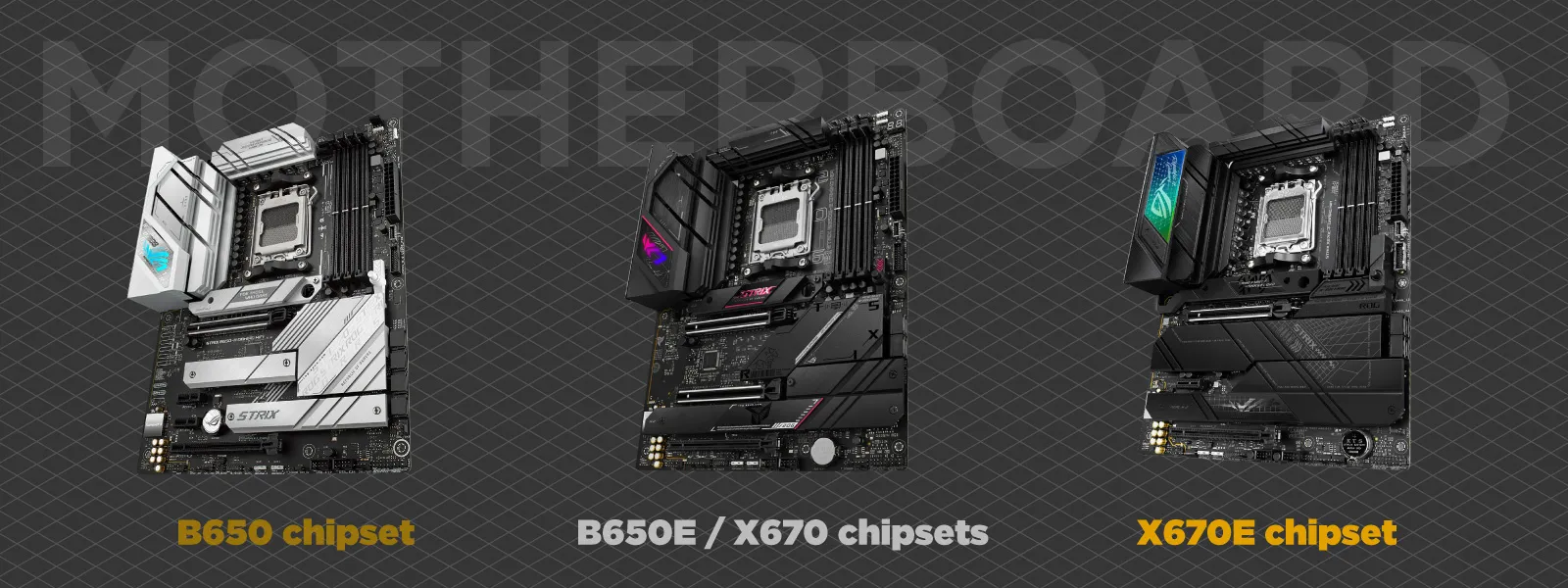 The correct motherboard depends on your CPU tier:
The correct motherboard depends on your CPU tier:
- Entry: B650 chipset – enough PCIe 5.0 lanes for a main M.2 drive, stable power delivery, and good value.
- Balanced: B650E or X670 – better VRM cooling, more connectivity for expansion cards, and extra NVMe drives.
- High-End: X670E – full PCIe 5.0 bandwidth for multiple slots and the most robust VRMs for sustained heavy workloads.
Focus on storage support, VRM quality, and BIOS maturity over flashy RGB or extreme overclocking features. However, motherboard choices are less impactful.
RAM – Capacity and Speed Matter
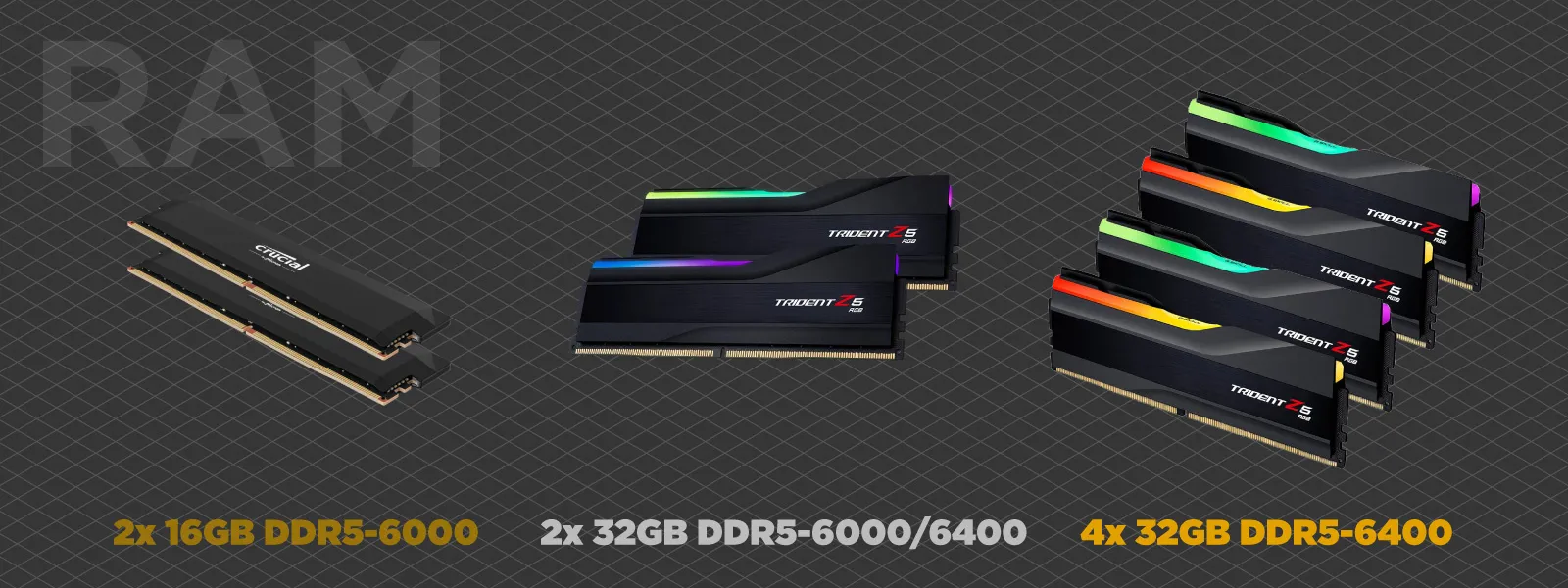 DDR5 prices are lower this year, making higher capacities much more accessible:
DDR5 prices are lower this year, making higher capacities much more accessible:
- Entry: 32 GB DDR5-6000 (2×16 GB) – enough for most smaller projects and general PC use.
- Balanced: 64 GB DDR5-6000 or 6400 – new “comfortable minimum” for professional work.
- High-End: 128 GB DDR5-6400 – ideal for massive datasets or heavy multitasking with multiple demanding programs.
For Ryzen 7000/9000 CPUs, DDR5-6000 CL30 remains a strong sweet spot for stability and performance. 128 Gigs is often also the maximum RAM limit in many prosumer-grade motherboards. If you feel like you need more, you may need to go up an entire tier of products.
Storage – Speed for Workflow, Capacity for Archive
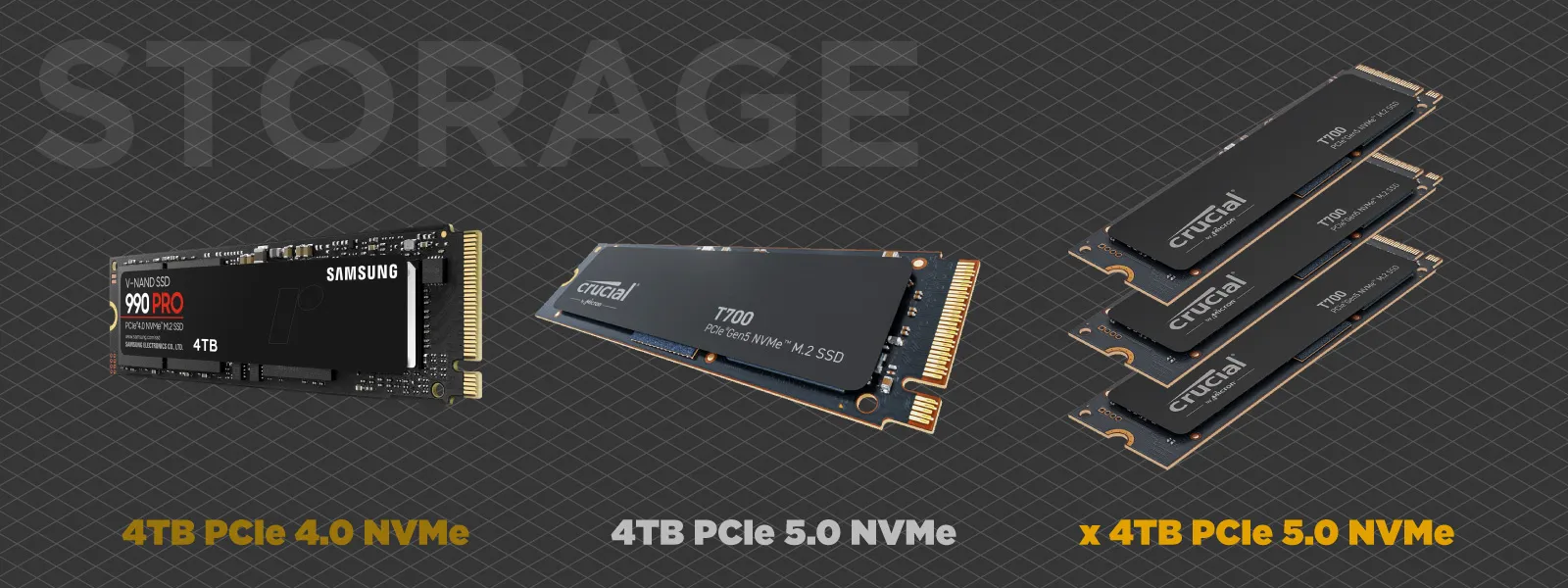 This year, PCIe 5.0 SSDs are finally practical:
This year, PCIe 5.0 SSDs are finally practical:
- Entry: 4 TB PCIe 4.0 NVMe for OS/programs, plus optional SATA SSD for projects.
- Balanced: 4 TB PCIe 5.0 NVMe for OS and active projects, plus a 2–4 TB PCIe 4.0 SSD for secondary storage.
- High-End: Multiple 2–4 TB PCIe 5.0 SSDs in RAID 0 for extreme speed, plus a large HDD or NAS for archive.
High random read/write speeds benefit photogrammetry workloads more than sequential speeds, so choose drives with strong mixed I/O performance. A 4-terabyte drive baseline might seem excessive, but the price per capacity scaling becomes nonlinear only at the 8-terabyte threshold. So, if you get a 1, 2, or 4 terabyte drive, you will be paying the same amount per terabyte. If you can get the most now, upgrading fast storage is somewhat less convenient because motherboards generally have limited NVME slots.
Graphics Cards – NVIDIA RTX 50 Series & AMD Alternatives
Entry Tier GPUs
- NVIDIA RTX 5060 Ti (16 GB) – efficient entry-level GPU with CUDA.
- AMD Radeon RX 7800 XT (16 GB) – similar performance, same VRAM, often cheaper, and excellent in rasterized workloads.
Balanced Tier GPUs
- NVIDIA RTX 5070 Ti (16 GB) has performance close to last year’s RTX 4080 Super. It is a good mid-tier CUDA option.
- AMD Radeon RX 7900 GRE (16 GB) – strong raw performance, lots of VRAM, and better value for some workloads if your software is not CUDA-dependent.
High-End Pro Tier GPUs
- NVIDIA RTX 5080 (16 GB GDDR7) – top-tier without going into the absurd 5090 pricing. Excellent for CUDA-heavy photogrammetry pipelines.
- AMD Radeon RX 7900 XTX (24 GB) – more VRAM than NVIDIA’s options at this price, which can be a real advantage for huge 3D scenes or ultra-high-res texture work.
If your workflow uses CUDA acceleration, an NVIDIA GPU will be a requirement. If your work is more VRAM-bound or uses open standards like OpenCL or Vulkan, AMD’s higher-VRAM cards can be of better value. For example, Pixpro Photogrammetry software uses OpenCL, so both brands of GPUs will work just fine.
Cooling – Keep it Under Control
Even with more efficient CPUs this year:
- Entry: Good air cooler (Noctua NH-U12A / be quiet! Dark Rock 4).
- Balanced: 240–280 mm AIO liquid cooler or high-end air cooler.
- High-End: 360 mm AIO or equivalent, especially for the 9950X under full load.
Airflow in the PC case matters just as much as CPU cooling — keep your GPU in mind. However, going with any well-regarded mainstream option will probably be just fine. There is little nuance between PC cooling besides size and compatibility. So make sure your case will fit the cooler you chose, and all will be well.
Power Supply – Stability First
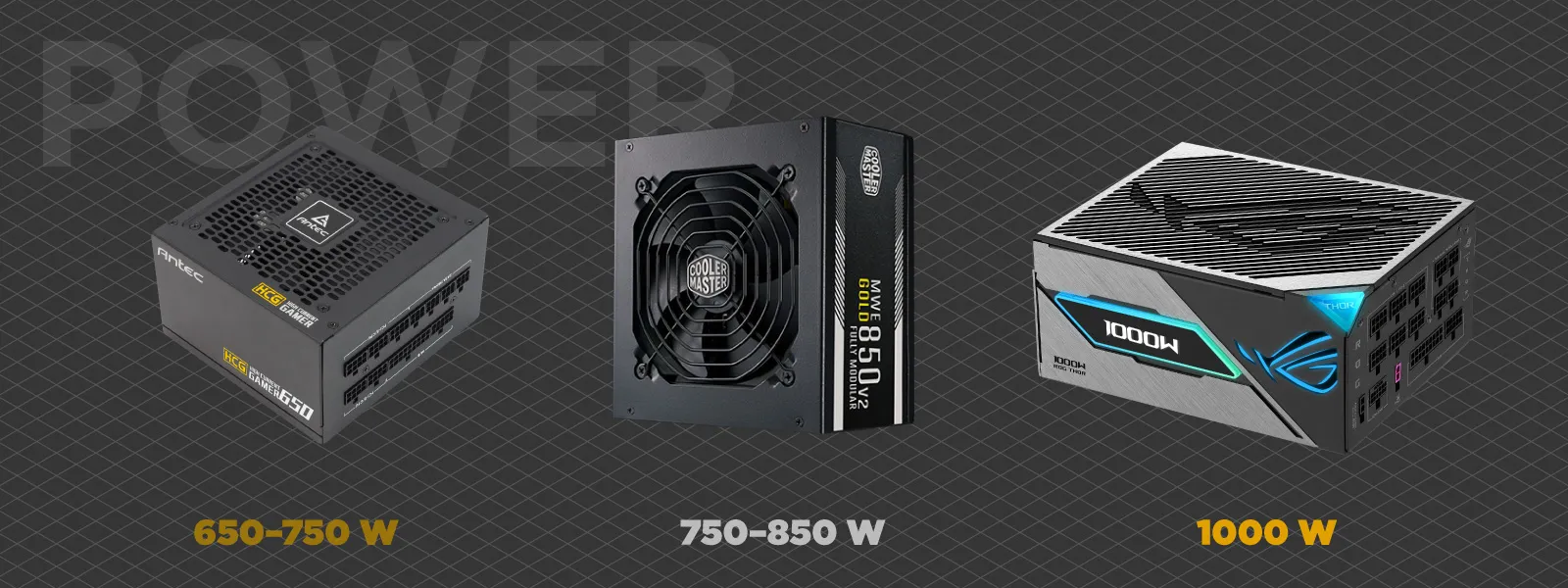 A good PSU protects your expensive components and ensures system stability:
A good PSU protects your expensive components and ensures system stability:
- Entry: 650–750 W Gold-rated
- Balanced: 750–850 W Gold/Platinum
- High-End: 1000 W Platinum for headroom with power-hungry GPUs
Stick to reputable brands like Seasonic, Corsair, and be quiet!, Cooler Master, NZXT, MSI, Asus, ASRock.
Cases – Airflow and Serviceability
Fractal Design Meshify, Lian Li Lancool, and NZXT H7 Flow are still solid choices. Prioritize cooling layout and ease of cable management over flashy designs—or not. At a certain threshold, cases become differentiated mostly by aesthetics, and if you can afford a case that costs 150 euros or more, you can choose one that looks nice to you, especially if your computer is placed in a visible spot.
Build Examples for 2025
Entry – Efficient Starter
- CPU: AMD Ryzen 7 9700X
- GPU: RTX 5060 Ti 16 GB / RX 7800 XT 16 GB
- RAM: 32 GB DDR5-6000
- Storage: 2 TB PCIe 4.0 NVMe SSD
- Motherboard: Any ATX B650 board.
- Cooling: High-end air cooler
- PSU: 650 W Gold
Balanced – All-Rounder
- CPU: AMD Ryzen 9 9900X
- GPU: RTX 5070 Ti 16 GB / RX 7900 XT 16 GB
- RAM: 64 GB DDR5-6400
- Storage: 4 TB PCIe 4.0 NVMe + 4 TB PCIe 4.0 SSD
- Motherboard: B650E or X670
- Cooling: 280–360 mm AIO
- PSU: 850 W Gold
High-End Pro – No Compromise (Within Reason)
- CPU: AMD Ryzen 9 9950X
- GPU: RTX 5080 16 GB or RX 7900 XTX 24 GB
- RAM: 128 GB DDR5-6400
- Storage: 4 TB PCIe 5.0 SSD + 8 TB HDD or SATA SSD archive disk
- Motherboard: X670E
- Cooling: 360 mm all-in-one liquid cooler
- PSU: 1000+ W Platinum
- Case: A nice one.
Final Thoughts
The 2025 hardware landscape is about incremental but worthwhile upgrades:
- CPUs are a bit faster and more efficient.
- PCIe 5.0 SSDs are now worth considering.
- DDR5 RAM is now the standard.
- GPU market still sucks. Consumer-grade GPUs are still too expensive, but we deal with what we have.
If you are on a 2022-era build, upgrading to any of these tiers will feel like a solid performance leap. Otherwise, the improvements are incremental. You may notice the lack of mention of AI and AI cores or accelerators. Photogrammetry is only beginning to utilize AI in such processes as masking or classification. Hardware compatibility with these processes is yet to be understood. Thus, I cannot make any recommendations with AI in mind. The latest and greatest GPUs will have what they have, and we will see what technological progress will bring us next year.

Photographer - Drone Pilot - Photogrammetrist. Years of experience in gathering data for photogrammetry projects, client support and consultations, software testing, and working with development and marketing teams. Feel free to contact me via Pixpro Discord or email (l.zmejevskis@pix-pro.com) if you have any questions about our blog.
Related Blog Posts
Our Related Posts
All of our tools and technologies are designed, modified and updated keeping your needs in mind

Viltrox 14mm vs. Pergear 14 mm Lens – Choosing for Interior Photogrammetry
Ultrawide-angle lenses are most commonly used in photogrammetry for interior scanning. I am planning to do an interior-type construction site scan, so I need a lens for my Sony full-frame camera. There are plenty of premium wide-angle options, but I need something that provides the best image qualit

Gaussian Splatting vs. Photogrammetry
Every few years, something new shows up online claiming to “revolutionize” 3D reconstruction. A while back it was NeRFs. Now it is Gaussian splatting — with endless YouTube clips of people walking through photorealistic 3D scenes that seem to render instantly.

Photo Dynamic Range - Real Life Tests and Advice
Dynamic range is an inescapable term when talking about digital photo or video capture. Our human vision has an incredible ability to adapt, allowing us to perceive both very dark and very bright scenes. When a digital imaging sensor or even a chemical negative captures a scene frozen in time, it is
Ready to get started with your project?
You can choose from our three different plans or ask for a custom solution where you can process as many photos as you like!
Free 14-day trial. Cancel any time.
.svg@webp)
